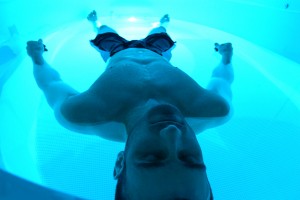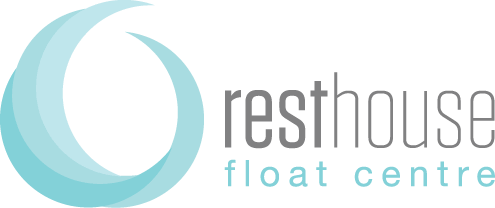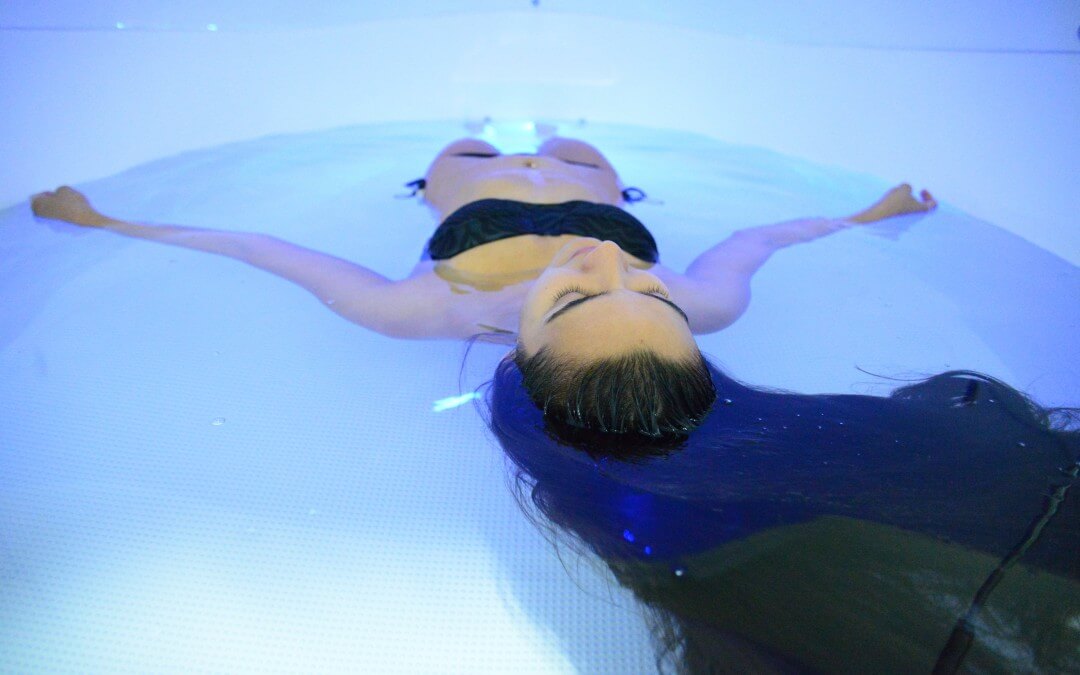Developed by Dr. John C. Lilly, Floatation-REST (Restricted Environmental Stimulation Technique) is a method that involves remaining suspended in a warm Epsom salt water solution in an environment (the float tank) free from external stimuli. The practice can generate a multitude of beneficial effects that include stress and pain reduction. In fact, the word ‘floatation’ has become somewhat synonymous with ‘relaxation’, and according to scientific research, floatation-REST is considered the most effective method for eliciting the Relaxation Response.
Attainable at a state of deep relaxation, the Relaxation Response is the physiological process of relieving stress. Identified as the physiological counterpart of the stress response Fight-or-Flight, the response is associated with reduced sympathetic nervous system activity, reduced heart rate, blood pressure, and respiratory frequency. This is easily generated in an environment where sensory input and bodily movement are eliminated or attenuated below threshold.
FIGHT-OR-FLIGHT RESPONSE
First described by American neurologist Walter Bradford Cannon, the fight-or-flight response is an unconscious, reflexive reaction to stress. It is initiated and carried out by the autonomic nervous system, causing a chemical chain-reaction and physiological changes that work to prepare the body in dealing with a perceived harmful event.
 The distinct steps involved during fight-or-flight start with an ‘external event’ that is interpreted as a threat requiring response by the hypothalamus, causing the release of several neurochemicals. The chemicals that make their way to the pituitary trigger the release of adrenocorticotropic hormone (ACTH) which travels to the adrenal glands via the bloodstream, triggering the release of cortisol, causing an increase in blood sugar and accelerating the body’s metabolism in a number of ways. The chemicals that travel directly to the adrenals trigger an outpouring of adrenaline (epinephrine and norepinephrine), consequently releasing more blood sugar, increasing heart rate, respiration, and blood pressure.
The distinct steps involved during fight-or-flight start with an ‘external event’ that is interpreted as a threat requiring response by the hypothalamus, causing the release of several neurochemicals. The chemicals that make their way to the pituitary trigger the release of adrenocorticotropic hormone (ACTH) which travels to the adrenal glands via the bloodstream, triggering the release of cortisol, causing an increase in blood sugar and accelerating the body’s metabolism in a number of ways. The chemicals that travel directly to the adrenals trigger an outpouring of adrenaline (epinephrine and norepinephrine), consequently releasing more blood sugar, increasing heart rate, respiration, and blood pressure.
Whilst the fight-or-flight response is considered an evolutionary mechanism designed to deal with immediate threats to security, it applies more to animals and the primitive man. The contemporary man is confronted with subtle, indirect, and sometimes unidentifiable stress-inducing stimuli, replacing immediate threats with habitual, chronic, and unabated stress.
Fight-or-flight mobilises the body’s entire stress mechanism, and the body responds by using its resources to focus on the specific point where stress is attacking, in other words, resistance is shifted to organs that are best capable of dealing with the threat of stress. Diverting resources in this manner results in the weakening of general resistance to disease, exhausting the body’s resources, and depleting the immune system when the threat is prolonged.
One approach in interrupting this cycle is to base an intervention on individual autoregulation to restore and adjust the way an individual responds to stimuli. The float tank is the perfect tool for interrupting fight-or-flight tension, by removing an individual from external stressors and eliciting a response that is a counterbalancing mechanism to the stress response. The float tank offers an environment that is free from external stimuli, providing the body relief from a chronic state of arousal by activating a physiological reaction parallel to fight-or-flight; the Relaxation Response (RR).
RELAXATION RESPONSE
Defined by Herbert Benson MD, the relaxation response counters the stress response of fight-or-flight by mobilising the body’s resources to generate a physical and emotional state of deep rest. A distinct physiological process takes place during relaxation that involves the coordinated activities of a large part of the nervous system. Also regulated by the hypothalamus, the parasympathetic nervous system works by decreasing muscular tension and releasing biochemicals that flood the body with feelings of pleasure, safety, euphoria, and a sense of wellbeing. While the response is produced by activating part of the involuntary system, RR can be consciously elicited through a number of relaxation techniques which include meditation and biofeedback.
The positive effects of regularly eliciting RR include increased emotional, mental, and physical strength and stability. RR has the capacity to effectively alleviate symptoms associated with a vast array of conditions including hypertension, arthritis, fatigue, insomnia, depression, anxiety, and heart disease. However, establishing and sustaining a regular practice to acquire a harmonious state of mind-body integration demands discipline, and the effects are often not immediate.
RELAXATION RESPONSE AND FLOATATION-REST
Techniques that require conscious effort are less successful at inducing relaxation in comparison to a technique that utilises an environment deliberately designed for this purpose. This makes floatation-REST the most effective and rapid method of achieving the mental and physical benefits of the relaxation response.
 Numerous scientific investigations into the physiological effects of floatation-REST, including research conducted by neuroendocrinologist John Turner and psychologist Thomas Fine, consistently demonstrate the following benefits;
Numerous scientific investigations into the physiological effects of floatation-REST, including research conducted by neuroendocrinologist John Turner and psychologist Thomas Fine, consistently demonstrate the following benefits;
- Decreased blood pressure, heart rate, oxygen consumption, blood lactate, and muscular tension
- Increased production of alpha and theta brain waves, bringing about synchronous and symmetrical rhythms throughout the cortex
- Significant reduction of biochemicals such as epinephrine, norepinephrine, ACTH, and cortisol
Thomas and Fine also discovered that the effectiveness of the relaxation response increases with multiple sessions, as well as having a strong maintenance effect by making the hypothalamus more resistant to stress. Basically, floatation-REST is a way to increase tolerance to stress by altering the ‘set-point in the endocrine homeostatic mechanism so that the individual would be experiencing a lower adrenal activation state”. – Thomas and Fine (1)
We can conclude with great certainty that floatation-REST is a non-invasive method capable of increasing resistance to stress, and constitutes an integral part for enhancing rest, recovery, and wellbeing. In contrast to techniques that require the individual utilise an internal strategy to elicit relaxation, floatation-REST allows the individual to effortlessly and passively achieve relaxation within a safe and controlled environment where the sympathetic nervous system cannot be aroused, making it the most valuable stress-management tool.
Sources:
Bood, S. A. et al. “Eliciting the Relaxation Response With the Help of Floatation-REST (Restricted Environmental Stimulation Technique) in Patients With Stress-Related Ailments.” International Journal of Stress Management, Vol. 13, No. 2, 154-175: 2006
Dierendonck, D. V. & Nijenhuis, J. T. “Floatation Restricted Environmental Stimulation Therapy (REST) as a Stress Management Tool: A Meta-analysis.” Psychology and Health, Vol. 20, No. 3, 405-412: June 2005
(1 – Page 99) Hutchison, M. The Book of Floating. Nevada City, CA: Gateways Books and Tapes, 1984
Kjellgren, A. & Westman, J. “Beneficial Effects of Treatment with Sensory Isolation in Floatation-tank as a Preventive Health-care Intervention – A Randomized Controlled Pilot Trial”. BMC Complimentary and Alternative Medicine, Vol. 14, No. 417: 2014. http://www.biomedcentral.com/1472-6882/14/417
Turner, John W. “Hormones and REST: A Controlled Study of REST-Assisted Relaxation.” Paper delivered at First International Conference on REST and Self-Regulation, Denver, Colorado, March 18. 1983


Recent Comments